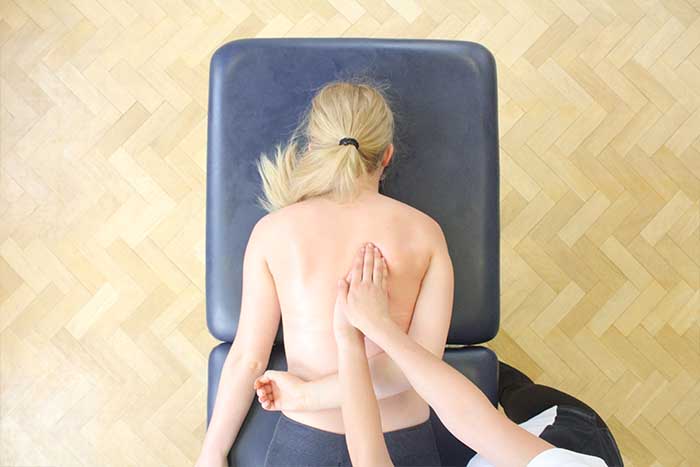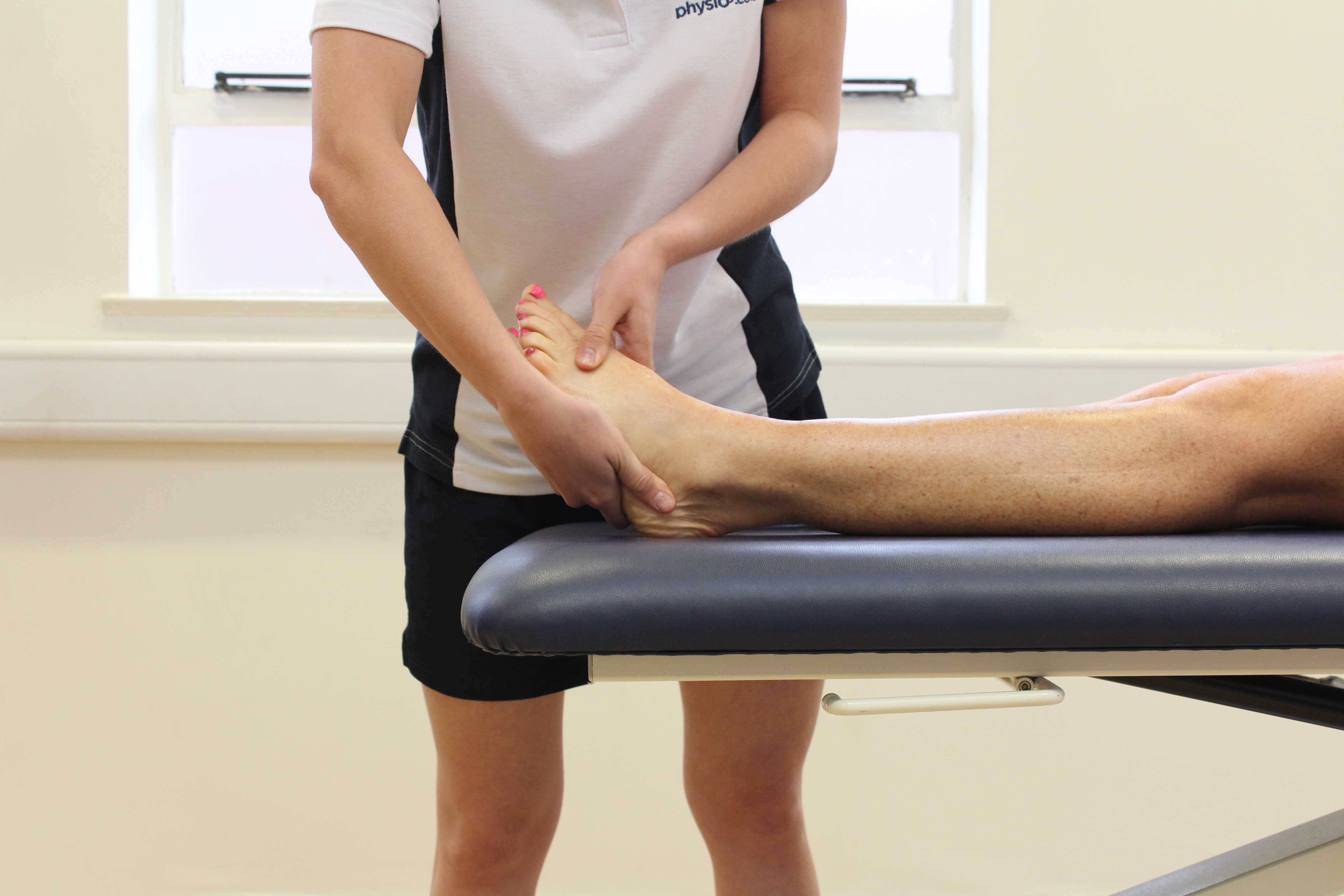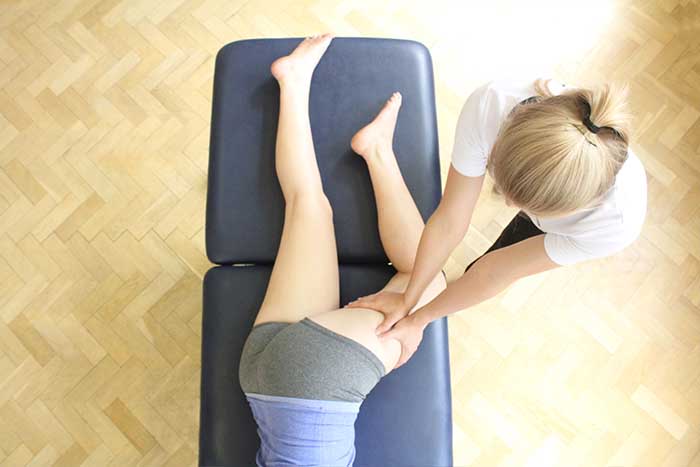Frictions are localised manipulations performed onto soft tissues with fingers or thumbs. Frictions are commonly used to treat ligaments, tendons, fascia and muscles. Frictions can be applied transversely across soft tissue structures or in a circular movement. Frictions can be applied with deep or superficial pressure depending on the desired outcome. Frictions can be used to increase local circulation and promote healing. Frictions are used around joints to loosen adhesions and improve movement. Massage therapists at Physio.co.uk can use frictions as an effective massage technique to treat a range of conditions.
What are frictions?
Frictions are a type of massage which applies force across soft tissue structures. Frictions are an effective technique to break up adhesions, help break down scar tissue and realign tissue fibres. Frictions are specific manipulations performed forwards and backwards on small areas of the body using only fingers or thumbs. Frictions are applied both deep and superficial dependent on the desired outcome. Deep friction techniques are applied with force transversely to the specific tissues involved. Superficial frictions are applied along the correct direction of the tissues and aim to enhance circulation and increase elasticity.

When are frictions used?
Frictions can be used to help in many circumstances. These circumstances include:
 Above: Transverse friction massage of illio-tibial band
Above: Transverse friction massage of illio-tibial bandFrictions can be used after injury. Massage can play an important role as part of rehabilitation for injury. Frictions are a specific massage technique used to help relieve tight tissues after injury. When injury occurs many of the soft tissue structures can be affected. Soft tissues can reduce in blood flow and tighten. Tightening of tissues around an area can reduce flexibility and limit range of movement around a joint. Frictions are used to apply force across tight tissues and relieve tension.
Frictions are an effective massage technique to help treat scar tissue. Scar tissue is formed in the body as part of the healing process. Scar tissue can be hard in texture and settle across the normal alignment of tissues. Frictions can increase the movement of tissues over one another and will break down adhesions and mobilise fibrous tissue. Friction massage will improve the extensibility of old scar tissue and help to free scars from underlying tissues.
Frictions can also be used to increase acute pain. When friction is performed over ligaments and around joints, the circulation to the area is increased. Increased circulation improves nourishment of ligaments and joint structures, and improves their function. The movement of frictions against the skin can also help interrupt the pain signal pathways to the brain. The friction against the skin causes alternate signals to be sent to the brain, blocking pain signals. If pain signals are not reaching the brain, the feeling of pain will not be registered.
What are the physiological effects of frictions?
Massage can produce many important physiological effects on the body. The physiological effects of frictions include:
 Above: Friction massage of calcaneofibular ligament as part of training programme
Above: Friction massage of calcaneofibular ligament as part of training programmeFrictions cause an increase of vasodilation in the blood. Vasodilation is the widening of blood vessels. Frictions against the skin increase localised temperature and encourage blood vessels to relax and widen. Increased vasodilation allows larger amounts of oxygen and nutrient rich blood to be delivered to the muscles.
Frictions can help breakdown and realign collagen fibres. Collagen fibres are a specific type of connective tissue that are high hard in texture and high in strength. Scar tissue is made up of collagen fibres. When scar tissue forms, it can lie across the normal alignment of the muscle fibres and become restrictive. Restricting tissues can limit movement and cause pain. Frictions are a specific massage technique that aims to treat restrictive tissue and realign fibres in their normal form.
Frictions also increase tissue elasticity. Frictions performed in the directions of muscle fibres can stretch and elongate the tissues. Frictions also increase temperature which can increase the movement of the tissue fibres so they can be manipulated and stretched. Increasing elasticity is important to increase movement and prevent tightness.

What are the benefits of frictions?
Frictions have many benefits. The benefits of frictions include:
One benefit of the friction technique is increasing range of movement. Frictions are used to treat tight and restricted tissues. When tissues are restricted, flexibility is decreased and range of movement around a joint is limited. Frictions increase range of movement by increasing temperature of the soft tissues, breaking down and realigning collagen fibres and increasing tissue elasticity.
Frictions are a beneficial massage treatment to assist in improving healing. Frictions improve healing by treating scar tissue/adhesions. Frictions break down scar tissue and adhesions and help realign them back into normal form. Assisting the realignment of muscle fibres can help increase proper healing of the tissues and help improve movement and pain.
Frictions help to decrease pain. When tissues are tight and restricted, pain increases due to the lack of movement available around an area. Frictions performed onto an affected area can treat the tissue and help relieve pain. Frictions decrease pain by increasing the temperature of the soft tissues, increasing flexibility and range of movement and interrupting pain signal pathways. The touch of frictions onto the skin sends messages to the brain which can interrupt pain signals being registered.
Common body parts treated by frictions
There are many common body parts that can be treated with frictions. Common body parts treated by frictions are:
Frictions can also be performed on other areas of the body and be effective to reduce scar tissue, and pain.
Summary
Frictions are a specific massage technique performed on soft tissues with fingers and thumbs. Frictions are a soft tissue manipulation performed with pressure across ligaments, tendons, fascia and muscles. Frictions can be performed transversely across muscles fibres to help treat restricted tissues and they can be applied in the direction of the fibres to increase tissue elasticity. Frictions have many benefits including increased range of movement, increased healing and decreased pain. Frictions can be applied to many areas of the body. The most common areas of the body for frictions to be used are shoulder, arm, hand and foot.
How can I arrange frictions as part of a massage treatment?
The easiest way to arrange frictions as part of a massage treatment at Physio.co.uk is to email us at office@physio.co.uk or call us on 0800 033 7800.
Alternatively if you have any questions please feel free to contact us.
We offer a 7 day service and provide home and clinic appointments.

 0330 088 7800
0330 088 7800



































